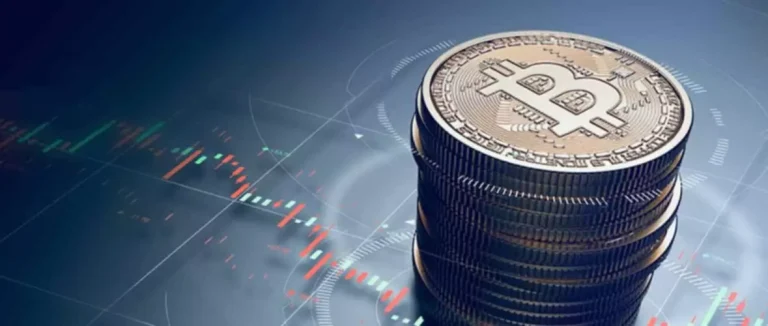Mean-reverting Prices And Losses In Liquidity Swimming Pools Ieee Convention Publication
P2P transactions require two users to belief one another to complete their end of the contract. Still, with liquidity swimming pools, automated market makers (amms) automatically join users with contracts containing their trading pairs. As this happens and merchants sell the asset whose value is falling, they receive the paired token in trade that means that the liquidity supplier now holds extra of the depreciating asset.

Stablecoin Amm
In conventional finance, liquidity is supplied by patrons and sellers of an asset. A decentralized trade (DEX) without liquidity is equal to a plant without water. Crypto liquidity pools present a sooner technique of turning digital property into cash, and this selection can be useful for individuals who make frequent transactions. Lastly, the introduction of liquidity swimming pools led to the invention of other DeFi services. For instance, some decentralized functions now provide blockchain insurance coverage, and there are also artificial belongings that customers can trade in a fully decentralized manner. Moreover, users who present liquidity are normally rewarded with liquidity pool (LP) tokens as proof that they staked their property.
Efficient payment assortment processes ensure accurate and well timed revenue generation. Equally necessary is the honest distribution of fees amongst liquidity providers. First, a wise contract is written, defining pool functionalities like token swapping and fees. Token pairs are then selected based on market demand, buying and selling volume, and compatibility. Liquidity pools improve market liquidity by allowing for more environment friendly worth discovery, lowering slippage, and growing market liquidity. They also make it simpler to make loans and earn passive income by way of yield farming and liquidity mining.
Knowledge And Market Analysis
However, implementing and adopting these solutions on a large scale requires widespread consensus, user training, and seamless integration with present infrastructure. Overcoming these challenges will pave the means in which for a more scalable and efficient crypto ecosystem. Smart contracts, while revolutionary in their capacity to automate transactions on the blockchain, come with inherent risks and vulnerabilities. These digital agreements are vulnerable to coding errors, resulting in unintended penalties and monetary losses. Vulnerabilities such as reentrancy attacks, unchecked external calls, and integer overflow may be https://www.xcritical.com/ exploited by malicious actors, compromising the integrity of the contract. This newfound inclusivity empowers retail traders to contribute liquidity actively, earn rewards, and partake in decentralized finance, fostering a extra equitable and inclusive financial landscape.
What Are Liquidity Swimming Pools, And How It Works?
- Still, with the help of liquidity pools the place tokens are locked up in smart contracts, folks could make transactions shortly.
- However, as the pool will get bigger and larger, the worth impact gets smaller, and enormous buy-ins have an result on the worth less.
- A qualified skilled should be consulted prior to creating monetary selections.
- Instead of relying solely on order matching, participants can trade immediately from the pooled liquidity.
You could think of an order book exchange as peer-to-peer, where buyers and sellers are linked by the order guide. For example, buying and selling on Binance DEX is peer-to-peer since trades happen immediately between person wallets. Decentralized Finance (DeFi) has created an explosion of on-chain activity. DEX volumes can meaningfully compete with the volume on centralized exchanges. As of December 2020, there are nearly 15 billion dollars of worth locked in DeFi protocols.

An impermanent loss also can happen when the value of the asset increases tremendously. If the price of the underlying asset decreases, then the worth of the pool’s tokens may even decrease. It happens when the price of the underlying asset within the pool fluctuates up or down.
We cater to completely different budgets, optimising liquidity for each token project. It’s about figuring out the targeted consumer viewers and their degree of trading sophistication. Moving, optimising, and creating liquidity differ between decentralised exchanges (DEX) and centralised exchanges (CEX). Learn what Phantom Wallet is, its key options, and tips on how to use it for managing Solana tokens, NFTs, and dApps.

Yield Farming Platforms — have emerged as a preferred pattern in DeFi, allowing users to earn passive income Prime Brokerage by lending or providing liquidity to various protocols. Users can earn curiosity and borrow towards their collateral by depositing property right into a Compound. The platform utilizes an algorithmic interest rate mannequin, dynamically adjusting rates primarily based on supply and demand. Compound’s success has spurred the expansion of numerous yield farming platforms, offering users with further income-generating alternatives.
Well, because you owned 50% of that pool (because your pal owned the opposite half) you earn $75 for offering that liquidity. Essentially, if you wish to buy a inventory on Robinhood at “market price” you are simply submitting an order to buy all of the stocks on the present price that sellers are keen to sell for. If you look on this graph (the left one) you can see what quantity of buyers and sellers there are at different prices.
AMMs are the protocols used to determine the price of digital assets, and it does a great job of providing probably the most fairly accurate market worth on liquidity swimming pools. There are many different DeFi markets, platforms, and incentivized swimming pools that let you earn rewards for providing and mining liquidity by way of LP tokens. So how does a crypto liquidity supplier select the place to put their funds? Yield farming is the practice of staking or locking up cryptocurrencies within a blockchain protocol liquidity pool meaning to generate tokenized rewards.
A liquidity pool is a crowdsourced pool of cryptocurrencies or tokens locked in a smart contract that’s used to facilitate trades between the belongings on a decentralized exchange (DEX). Before automated market makers (AMMs) came into play, crypto market liquidity was a problem for DEXs on Ethereum. At that point, DEXs were a model new technology with a sophisticated interface and the variety of patrons and sellers was small, so it was tough to find enough individuals prepared to commerce frequently. AMMs repair this drawback of restricted liquidity by creating liquidity swimming pools and providing liquidity providers the motivation to supply these pools with belongings, all with out the necessity for third-party middlemen. The more property in a pool and the extra liquidity the pool has, the better trading becomes on decentralized exchanges.
Liquidity pools pave a means for liquidity suppliers to earn curiosity on their digital belongings. By locking their tokens into a smart contract, customers can earn a portion of the transaction fees generated from buying and selling activity in the pool. However, slippage, the difference between the expected and precise execution value, can impression trades on these decentralized exchanges. High slippage arises when liquidity is restricted, resulting in potential losses or decreased features for traders.

